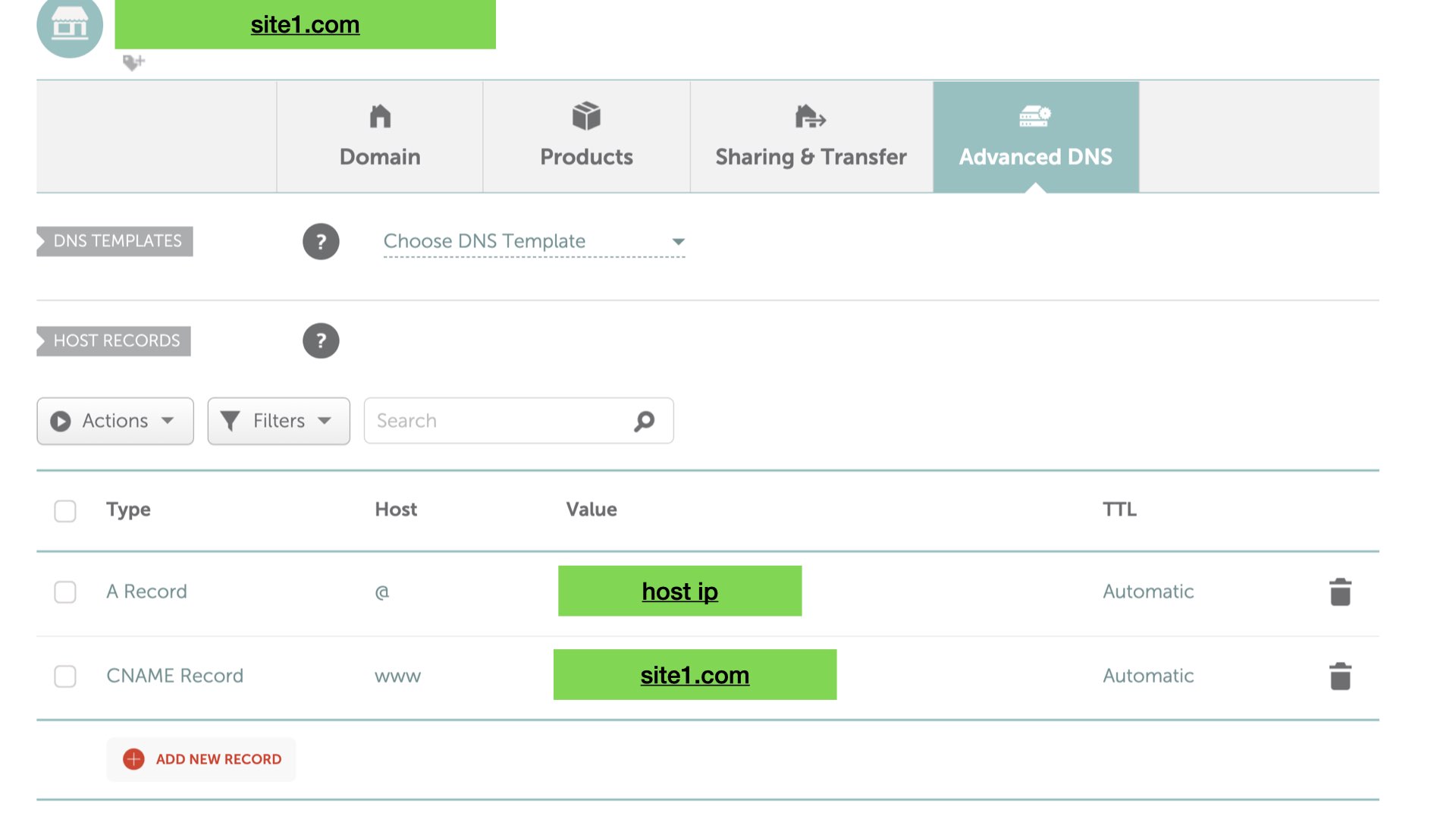
添加網站內容
Ubuntu里apache2的網站內容在
/var/www/html/我們可以把網站內容(php, html files)放在上面路徑的子路徑中, 比如
/var/www/html/site1
/var/www/html/site2設置Apache2
本文以Ubuntu為例子. 我們需要設置的文件在
/etc/apache2首先要在sites-available里添加新的網站, 比如叫site1
cd /etc/apache2/sites-available
vim site1.conf添加文件內容如下
<VirtualHost *:80>
# The ServerName directive sets the request scheme, hostname and port that
# the server uses to identify itself. This is used when creating
# redirection URLs. In the context of virtual hosts, the ServerName
# specifies what hostname must appear in the request's Host: header to
# match this virtual host. For the default virtual host (this file) this
# value is not decisive as it is used as a last resort host regardless.
# However, you must set it for any further virtual host explicitly.
#ServerName www.example.com
ServerAdmin webmaster@localhost
ServerName site1.com
ServerAlias www.site1.com
DocumentRoot /var/www/html/site1
# Available loglevels: trace8, ..., trace1, debug, info, notice, warn,
# error, crit, alert, emerg.
# It is also possible to configure the loglevel for particular
# modules, e.g.
#LogLevel info ssl:warn
ErrorLog ${APACHE_LOG_DIR}/error.log
CustomLog ${APACHE_LOG_DIR}/access.log combined
# For most configuration files from conf-available/, which are
# enabled or disabled at a global level, it is possible to
# include a line for only one particular virtual host. For example the
# following line enables the CGI configuration for this host only
# after it has been globally disabled with "a2disconf".
#Include conf-available/serve-cgi-bin.conf
</VirtualHost>然後添加第二個網站, 比如叫site2
cd /etc/apache2/sites-available
vim site2.conf給site2添加內容
<VirtualHost *:80>
# The ServerName directive sets the request scheme, hostname and port that
# the server uses to identify itself. This is used when creating
# redirection URLs. In the context of virtual hosts, the ServerName
# specifies what hostname must appear in the request's Host: header to
# match this virtual host. For the default virtual host (this file) this
# value is not decisive as it is used as a last resort host regardless.
# However, you must set it for any further virtual host explicitly.
#ServerName www.example.com
ServerAdmin webmaster@localhost
ServerName site2.com
ServerAlias www.site2.com
DocumentRoot /var/www/html/site2
# Available loglevels: trace8, ..., trace1, debug, info, notice, warn,
# error, crit, alert, emerg.
# It is also possible to configure the loglevel for particular
# modules, e.g.
#LogLevel info ssl:warn
ErrorLog ${APACHE_LOG_DIR}/error.log
CustomLog ${APACHE_LOG_DIR}/access.log combined
# For most configuration files from conf-available/, which are
# enabled or disabled at a global level, it is possible to
# include a line for only one particular virtual host. For example the
# following line enables the CGI configuration for this host only
# after it has been globally disabled with "a2disconf".
#Include conf-available/serve-cgi-bin.conf
</VirtualHost>最後需要給以上兩個site的conf file創建symbolic link, 放在sites-enabled里
ln -s /etc/apache2/sites-available/site1.conf /etc/apache2/sites-enabled/site1.conf
ln -s /etc/apache2/sites-available/site2.conf /etc/apache2/sites-enabled/site2.conf可能需要重啟apache2
sudo service apache2 restart更新域名指向
以Namecheap為例子, 到所選域名, 比如site1.com里, 點擊Manage, 然後在Advanced DNS里, 如下設置

給site2也做類似的配置, 因為都在同一台伺服器上, host ip是一樣的, 把site1.com換成site2.com就可以
最後在瀏覽器打開site1.com和site2.com看看是否正常工作.
